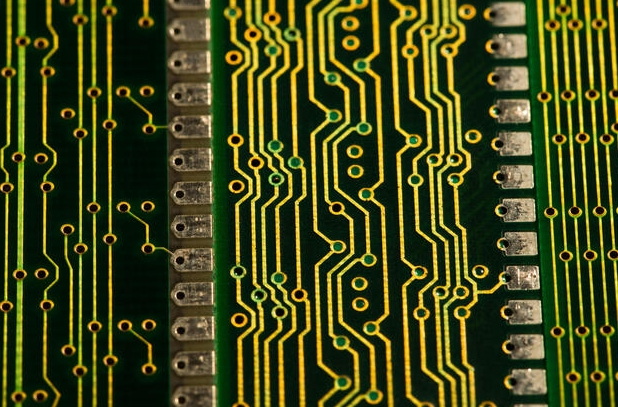Content Menu
● Understanding Surface Mount Devices
>> Why is SMD Identification Important?
● Best Methods for Identifying Surface Mount Devices
>> Visual Inspection
>> Use of SMD Identification Tools
>> Reference Guides and Databases
>> Schematic Diagrams
>> Community Forums and Resources
● Conclusion
● Related Questions
>> 1. What are the common types of Surface Mount Devices?
>> 2. How can I differentiate between SMD resistors and capacitors?
>> 3. What tools are essential for SMD identification?
>> 4. Where can I find datasheets for SMD components?
>> 5. How does SMD identification impact PCB assembly?
Surface Mount Device (SMD) identification is a crucial skill in electronics, especially as the industry moves towards smaller, more compact components. SMDs are widely used in modern electronic devices due to their efficiency and space-saving design. This article explores the best methods for identifying SMDs, providing insights into tools, techniques, and tips that can enhance your identification skills.
Understanding Surface Mount Devices
Surface Mount Devices are electronic components that are mounted directly onto the surface of printed circuit boards (PCBs). Unlike traditional through-hole components, SMDs do not require holes to be drilled into the PCB, allowing for a more compact design and higher component density. Common types of SMDs include resistors, capacitors, diodes, and integrated circuits (ICs).

Why is SMD Identification Important?
Identifying SMDs accurately is essential for several reasons:
1. Repair and Maintenance: Knowing how to identify SMDs helps in troubleshooting and repairing electronic devices.
2. Component Replacement: Accurate identification ensures that the correct components are sourced for replacements.
3. Design and Assembly: Understanding SMD types and specifications aids in the design and assembly of PCBs.
Best Methods for Identifying Surface Mount Devices
Visual Inspection
Visual inspection is the most straightforward method for identifying SMDs. This involves examining the component's physical characteristics, such as size, shape, and markings. Here are some tips for effective visual inspection:
- Familiarize Yourself with Common SMD Shapes: SMDs come in various shapes, including rectangular, square, and cylindrical. Knowing these shapes can help narrow down the possibilities.
- Look for Markings: Many SMDs have markings that indicate their value or type. For example, resistors may have a three-digit code that represents their resistance value.
Use of SMD Identification Tools
Several tools can assist in the identification of SMDs:
- SMD Code Readers: These devices can read the markings on SMDs and provide information about the component.
- Multimeters: A multimeter can be used to measure resistance, capacitance, or voltage, helping to identify the component type.
- SMD Testers: Specialized testers can identify various SMD components by applying specific tests and analyzing the results.
Reference Guides and Databases
Utilizing reference guides and online databases can significantly aid in SMD identification:
- Datasheets: Most manufacturers provide datasheets for their components, which include detailed specifications and identification information.
- Online Databases: Websites like Digi-Key and Mouser offer extensive databases where you can search for components by their markings or specifications.

Schematic Diagrams
Schematic diagrams are invaluable for identifying SMDs on a PCB. They provide a visual representation of the circuit and indicate where each component is located. By cross-referencing the schematic with the physical board, you can accurately identify each SMD.
Community Forums and Resources
Engaging with online communities can provide additional support for SMD identification:
- Electronics Forums: Websites like Stack Exchange and Reddit have dedicated sections where users can ask questions and share knowledge about SMD identification.
- YouTube Tutorials: Many electronics enthusiasts share videos demonstrating SMD identification techniques, which can be helpful for visual learners.
Conclusion
Identifying Surface Mount Devices is a critical skill for anyone involved in electronics, from hobbyists to professionals. By employing methods such as visual inspection, using specialized tools, consulting reference guides, analyzing schematic diagrams, and engaging with community resources, you can enhance your SMD identification skills. As technology continues to evolve, staying informed about the latest identification techniques will ensure you remain proficient in this essential area of electronics.

Related Questions
1. What are the common types of Surface Mount Devices?
Common types of SMDs include resistors, capacitors, inductors, diodes, and integrated circuits (ICs). Each type has specific characteristics and applications in electronic circuits.
2. How can I differentiate between SMD resistors and capacitors?
SMD resistors typically have a rectangular shape with a three-digit code indicating their resistance value, while capacitors may have markings indicating their capacitance and voltage rating. Capacitors are often larger than resistors and may have a cylindrical shape.
3. What tools are essential for SMD identification?
Essential tools for SMD identification include multimeters, SMD code readers, SMD testers, and magnifying glasses. These tools help measure values and read markings on components.
4. Where can I find datasheets for SMD components?
Datasheets for SMD components can be found on manufacturer websites, electronic component distributors like Digi-Key and Mouser, and online databases that aggregate component information.
5. How does SMD identification impact PCB assembly?
Accurate SMD identification is crucial for PCB assembly as it ensures that the correct components are used, which affects the overall functionality and reliability of the electronic device.




















